|
Le calcium est essentiel à la vie.
L’organisme ne produit pas de calcium. En conséquence, il est primordial de consommer une quantité adéquate de ce minéral essentiel; un apport adéquat de calcium dans un bon régime alimentaire peut aider à prévenir la perte osseuse. L'étiquette sur les suppléments de calcium est utile pour déterminer la quantité de calcium qui est dans une portion. A titre d'exemple, le carbonate de calcium est composé de 40% de calcium élémentaire, de sorte que 1250 milligrammes (mg) de carbonate de calcium contient 500 mg de calcium élémentaire. Il est important de noter la taille de la portion (nombre de comprimés) pour déterminer la quantité de calcium qui se trouve dans une portion. La plupart des adultes doivent en obtenir chaque jour entre 1 000 et 1 200 mg dans leur alimentation et (ou) par la prise de suppléments. L’extrait de pépins de raisin : l’inflammation pulmonaire induite par l'allergène sera significativement améliorée en cas d’asthme chronique. Veuillez lire l'article complet (en anglais seulement) :
Abstract Asthma is characterized by airway inflammation and airway remodeling. Our previous study revealed that grape seed proanthocyanidin extract (GSPE) could inhibit asthmatic airway inflammation and airway hyper-responsiveness by down-regulation of inducible nitric oxide synthase in a murine model of acute asthma. The present study aimed to evaluate GSPE's effects on airway inflammation and airway remodeling in a chronic asthmatic model. BALB/c mice were sensitized with ovalbumin (OVA) and then were challenged three times a week for 8 weeks. Airway responsiveness was measured at 24 h after the last OVA challenge. HE staining, PAS staining, and Masson staining were used to observe any airway inflammation in the lung tissue, airway mucus secretion, and subepithelial fibrosis, respectively. The cytokines levels in the lavage fluid (BALF) in addition to the total serum immunoglobulin E (IgE) levels were detected by ELISA. Furthermore, lung collagen contents, α-smooth muscle actin (α-SMA), and transforming growth factor-β1 (TGF-β1) expression in the airway were assessed by hydroxyproline assay, immunohistochemistry, and Western blot analysis, respectively. GSPE administration significantly suppressed airway resistance as well as reduced the amount of inflammatory cells, especially the eosinophil count, in BALF. Additionally, the GSPE treatment markedly decreased interleukin (IL)-4, IL-13, and vascular endothelial growth factor (VEGF) levels in BALF in addition to the total serum IgE levels. A histological examination demonstrated that GSPE significantly ameliorated allergen-induced lung eosinophilic inflammation and decreased PAS-positive epithelial cells in the airway. The elevated hydroxyproline contents, lung α-SMA contents, and TGF-β1 protein expression that were observed in the OVA mice were also inhibited by GSPE. In conclusion, GSPE could inhibit airway inflammation and airway remodeling in a murine model of chronic asthma, thus providing a potential treatment for asthma. RÉFÉRENCE: http://www.ncbi.nlm.nih.gov/pubmed/25920255 Nat Prod Commun. 2015 Feb;10(2):257-62. Proanthocyanidin from grape seed extract inhibits airway inflammation and remodeling in a murine model of chronic asthma. Zhou DY, Fang SR, Zou CF, Zhang Q, Gu W. La cannelle aide les personnes atteintes de diabète de type 2 à améliorer leur capacité à réguler le taux de sucre dans le sang et rend les cellules graisseuses plus sensibles à l'insuline. Veuillez lire l'article complet (en anglais seulement) :
Abstract Metabolic syndrome is associated with insulin resistance, elevated glucose and lipids, inflammation, decreased antioxidant activity, increased weight gain, and increased glycation of proteins. Cinnamon has been shown to improve all of these variables in in vitro, animal, and/or human studies. In addition, cinnamon has been shown to alleviate factors associated with Alzheimer's disease by blocking and reversing tau formation in vitro and in ischemic stroke by blocking cell swelling. In vitro studies also show that components of cinnamon control angiogenesis associated with the proliferation of cancer cells. Human studies involving control subjects and subjects with metabolic syndrome, type 2 diabetes mellitus, and polycystic ovary syndrome all show beneficial effects of whole cinnamon and/or aqueous extracts of cinnamon on glucose, insulin, insulin sensitivity, lipids, antioxidant status, blood pressure, lean body mass, and gastric emptying. However, not all studies have shown positive effects of cinnamon, and type and amount of cinnamon, as well as the type of subjects and drugs subjects are taking, are likely to affect the response to cinnamon. In summary, components of cinnamon may be important in the alleviation and prevention of the signs and symptoms of metabolic syndrome, type 2 diabetes, and cardiovascular and related diseases. RÉFÉRENCE: http://www.ncbi.nlm.nih.gov/pubmed/20513336 J Diabetes Sci Technol. 2010 May 1;4(3):685-93. Cinnamon: potential role in the prevention of insulin resistance, metabolic syndrome, and type 2 diabetes. Qin B1, Panickar KS, Anderson RA. Chez les patients atteints de la maladie d'Alzheimer, une méta-analyse a démontré des taux plasmatiques significativement plus faibles d'acide folique, des vitamines A, B12, C et E. Des niveaux plus faibles de nutriments plasmatiques indiquent que les patients atteints de la maladie d'Alzheimer ont une déficience systémique dans la disponibilité de plusieurs nutriments. La malnutrition classique est bien connue pour être courante dans la maladie d'Alzheimer, ce qui suggère que l’état compromis de micronutriments pourrait précéder la malnutrition en protéine et le manque d’énergie. Veuillez lire l'article complet (en anglais seulement) :
Abstract BACKGROUND: Alzheimer disease (AD) patients are at risk of nutritional insufficiencies because of physiological and psychological factors. Nutritional compounds are postulated to play a role in the pathophysiological processes that are affected in AD. We here provide the first systematic review and meta-analysis that compares plasma levels of micronutrients and fatty acids in AD patients to those in cognitively intact elderly controls. A secondary objective was to explore the presence of different plasma nutrient levels between AD and control populations that did not differ in measures of protein/energy nourishment. METHODS: We screened literature published after 1990 in the Cochrane Central Register of Controlled Trials, Medline, and Embase electronic databases using Preferred Reporting Items for Systematic reviews and Meta-Analyses (PRISMA) guidelines for AD patients, controls, micronutrient, vitamins, and fatty acids, resulting in 3397 publications, of which 80 met all inclusion criteria. Status of protein/energy malnutrition was assessed by body mass index, mini nutritional assessment score, or plasma albumin. Meta-analysis, with correction for differences in mean age between AD patients and controls, was performed when more than five publications were retrieved for a specific nutrient. RESULTS: We identified five or more studies for folate, vitamin A, vitamin B12, vitamin C, vitamin D, vitamin E, copper, iron, and zinc but fewer than five studies for vitamins B1 and B6, long-chain omega-3 fatty acids, calcium, magnesium, manganese, and selenium (the results of the individual publications are discussed). Meta-analysis showed significantly lower plasma levels of folate and vitamin A, vitamin B12, vitamin C, and vitamin E (P < .001), whereas nonsignificantly lower levels of zinc (P = .050) and vitamin D (P = .075) were found in AD patients. No significant differences were observed for plasma levels of copper and iron. A meta-analysis that was limited to studies reporting no differences in protein/energy malnourishment between AD and control populations yielded similar significantly lower plasma levels of folate and vitamin B12, vitamin C, and vitamin E in AD. CONCLUSIONS: The lower plasma nutrient levels indicate that patients with AD have impaired systemic availability of several nutrients. This difference appears to be unrelated to the classic malnourishment that is well known to be common in AD, suggesting that compromised micronutrient status may precede protein and energy malnutrition. Contributing factors might be AD-related alterations in feeding behavior and intake, nutrient absorption, alterations in metabolism, and increased utilization of nutrients for AD pathology-related processes. Given the potential role of nutrients in the pathophysiological processes of AD, the utility of nutrition may currently be underappreciated and offer potential in AD management. RÉFÉRENCE: http://www.ncbi.nlm.nih.gov/pubmed/24144963 Alzheimers Dement. 2014 Jul;10(4):485-502. doi: 10.1016/j.jalz.2013.05.1771. Epub 2013 Oct 19. Plasma nutrient status of patients with Alzheimer's disease: Systematic review and meta-analysis. Lopes da Silva S1, Vellas B2, Elemans S3, Luchsinger J4, Kamphuis P1, Yaffe K5, Sijben J6, Groenendijk M3, Stijnen T7. La vitamine K est essentielle pour l'activation de l'ostéocalcine (une protéine qui aide à la croissance et à la minéralisation osseuse). Veuillez lire l'article complet (en anglais seulement) :
Abstract For early prevention or inhibition of postmenopausal and age-related bone loss, nutritional interventions might be a first choice. For some vitamins and minerals an important role in bone metabolism is known or suggested. Calcium and vitamin D support bone mineral density and are basic components in most preventive strategies. Magnesium is involved in a number of activities supporting bone strength, preservation, and remodeling. Fluorine and strontium have bone-forming effects. However, high amounts of both elements may reduce bone strength. Boron is especially effective in case of vitamin D, magnesium, and potassium deficiency. Vitamin K is essential for the activation of osteocalcin. Vitamin C is an important stimulus for osteoblast-derived proteins. Increasing the recommended amounts (US RDA 1989), adequate intakes (US DRI 1997), or assumed normal intakes of mentioned food components may lead to a considerable reduction or even prevention of bone loss, especially in late postmenopausal women and the elderly. RÉFÉRENCE: http://www.ncbi.nlm.nih.gov/pubmed/16373990 Ann Nutr Metab. 2006;50(2):85-94. Epub 2005 Dec 21. Immune-enhancing role of vitamin C and zinc and effect on clinical conditions. Wintergerst ES1, Maggini S, Hornig DH. La vitamine C et le zinc jouent des rôles importants dans la fonction immunitaire, dans la résistance aux agents infectieux ainsi que dans la réduction du risque, durée et gravité des maladies infectieuses. Veuillez lire l'article complet (en anglais seulement) :
Vitamin C concentrations in the plasma and leukocytes rapidly decline during infections and stress. Supplementation of vitamin C was found to improve components of the human immune system such as antimicrobial and natural killer cell activities, lymphocyte proliferation, chemotaxis, and delayed-type hypersensitivity. Vitamin C contributes to maintaining the redox integrity of cells and thereby protects them against reactive oxygen species generated during the respiratory burst and in the inflammatory response. Likewise, zinc undernutrition or deficiency was shown to impair cellular mediators of innate immunity such as phagocytosis, natural killer cell activity, and the generation of oxidative burst. Therefore, both nutrients play important roles in immune function and the modulation of host resistance to infectious agents, reducing the risk, severity, and duration of infectious diseases. This is of special importance in populations in which insufficient intake of these nutrients is prevalent. In the developing world, this is the case in low- and middle-income countries, but also in subpopulations in industrialized countries, e.g. in the elderly. A large number of randomized controlled intervention trials with intakes of up to 1 g of vitamin C and up to 30 mg of zinc are available. These trials document that adequate intakes of vitamin C and zinc ameliorate symptoms and shorten the duration of respiratory tract infections including the common cold. Furthermore, vitamin C and zinc reduce the incidence and improve the outcome of pneumonia, malaria, and diarrhea infections, especially in children in developing countries. REFERENCE: http://www.ncbi.nlm.nih.gov/pubmed/16373990 Ann Nutr Metab. 2006;50(2):85-94. Epub 2005 Dec 21. Immune-enhancing role of vitamin C and zinc and effect on clinical conditions. Wintergerst ES1, Maggini S, Hornig DH. La supplémentation en vitamine B a eu un effet protecteur significatif sur le risque d'accident vasculaire cérébral. Veuillez lire l'article complet (en anglais seulement) :
Abstract BACKGROUND: Supplementation with B vitamins for stroke prevention has been evaluated over the years, but which combination of B vitamins is optimal for stroke prevention is unclear. We performed a network meta-analysis to assess the impact of different combinations of B vitamins on risk of stroke. METHODS: A total of 17 trials (86 393 patients) comparing 7 treatment strategies and placebo were included. A network meta-analysis combined all available direct and indirect treatment comparisons to evaluate the efficacy of B vitamin supplementation for all interventions. RESULTS: B vitamin supplementation was associated with reduced risk of stroke and cerebral hemorrhage. The risk of stroke was lower with folic acid plus vitamin B6 as compared with folic acid plus vitamin B12 and was lower with folic acid plus vitamin B6 plus vitamin B12 as compared with placebo or folic acid plus vitamin B12. The treatments ranked in order of efficacy for stroke, from higher to lower, were folic acid plus vitamin B6 > folic acid > folic acid plus vitamin B6 plus vitamin B12 > vitamin B6 plus vitamin B12 > niacin > vitamin B6 > placebo > folic acid plus vitamin B12. CONCLUSIONS: B vitamin supplementation was associated with reduced risk of stroke; different B vitamins and their combined treatments had different efficacy on stroke prevention. Folic acid plus vitamin B6 might be the optimal therapy for stroke prevention. Folic acid and vitamin B6 were both valuable for stroke prevention. The efficacy of vitamin B12 remains to be studied. RÉFÉRENCE: http://www.ncbi.nlm.nih.gov/pubmed/26355679 PLoS One. 2015 Sep 10;10(9):e0137533. doi: 10.1371/journal.pone.0137533. eCollection 2015. Efficacy of Supplementation with B Vitamins for Stroke Prevention: A Network Meta-Analysis of Randomized Controlled Trials. Dong H1, Pi F2, Ding Z1, Chen W3, Pang S1, Dong W1, Zhang Q1. L’Extrait de pépin de raisin (EPR) et leurs proanthocyanidines (PPR) atténuent certains effets cytotoxiques sur les cellules / tissus normaux provoqués par la chimiothérapie / radiothérapie. Veuillez lire l'article complet (en anglais seulement) :
Abstract Grapes are one of the most consumed fruits in the world and are rich in polyphenols. Grape seed proanthocyanidins (GSP) have demonstrated chemopreventive and/or chemotherapeutic effects in various cancer cell cultures and animal models. The clinical efficacy of chemotherapy is often limited by its adverse effects. Several studies show that reactive oxygen species mediate the cardiotoxicity and neurotoxicity induced by various cancer chemotherapeutic agents. This implies that concomitant administration of antioxidants may prevent these adverse effects. The review was carried out in accordance with the PRISMA guidelines. An electronic search strategy in Medline and Embase databases was conducted.Of the 41 studies reviewed, 27 studied GSP while the remainder (14) studied grape seed or skin extracts (GSE). All the studies were published in English, except 2 in Chinese. A significant percentage (34%) of the studies we reviewed assessed the effect of GSE or GSP on cardiotoxicity induced by chemotherapy. Doxorubicin was the most common chemotherapeutic drug studied followed by cisplatin. Research studies that assessed the effect of GSE or GSP on radiation treatment accounted for 22% of the articles reviewed. GSE/GSP ameliorates some of the cytotoxic effects on normal cells/tissues induced by chemo/radiotherapy. RÉFÉRENCE: http://www.ncbi.nlm.nih.gov/pubmed/25880972 Nutr Cancer. 2015;67(5):730-40. doi: 10.1080/01635581.2015.1029639. Epub 2015 Apr 16. The Role of Grape Seed Extract in the Treatment of Chemo/Radiotherapy Induced Toxicity: A Systematic Review of Preclinical Studies. Olaku OO1, Ojukwu MO, Zia FZ, White JD. Les acides gras Omega dans l'huile de poisson réduisent l'incidence de la dégénérescence maculaire liée à l'âge. Veuillez lire l'article complet (en anglais seulement) :
Abstract OBJECTIVE: To examine whether intake of ω-3 fatty acids and fish affects incidence of age-related macular degeneration (AMD) in women. DESIGN: A detailed food-frequency questionnaire was administered at baseline among 39 876 female health professionals (mean [SD] age: 54.6 [7.0] years). A total of 38 022 women completed the questionnaire and were free of a diagnosis of AMD. The main outcome measure was incidentAMD responsible for a reduction in best-corrected visual acuity to 20/30 or worse based on self-report confirmed by medical record review. RESULTS: A total of 235 cases of AMD, most characterized by some combination of drusen and retinal pigment epithelial changes, were confirmed during an average of 10 years of follow-up. Women in the highest tertile of intake for docosahexaenoic acid, compared with those in the lowest, had a multivariate-adjusted relative risk of AMD of 0.62 (95% confidence interval, 0.44-0.87). For eicosapentaenoic acid, women in the highest tertile of intake had a relative risk of 0.66 (95% confidence interval, 0.48-0.92). Consistent with the findings for docosahexaenoic acid and eicosapentaenoic acid, women who consumed 1 or more servings of fish per week, compared with those who consumed less than 1 serving per month, had a relative risk of AMD of 0.58 (95% confidence interval, 0.38-0.87). CONCLUSION: These prospective data from a large cohort of female health professionals without a diagnosis of AMD at baseline indicate that regular consumption of docosahexaenoic acid and eicosapentaenoic acid and fish was associated with a significantly decreased risk of incident AMD and may be of benefit in primary prevention of AMD. http://www.ncbi.nlm.nih.gov/pubmed/21402976 Arch Ophthalmol. 2011 Jul;129(7):921-9. doi: 10.1001/archophthalmol.2011.34. Epub 2011 Mar 14. Dietary ω-3 fatty acid and fish intake and incident age-related macular degeneration in women. Christen WG1, Schaumberg DA, Glynn RJ, Buring JE. On a constaté une diminution significative des niveaux d'acide ascorbique plasmatiques chez les patients souffrant de dépression majeure par rapport aux sujets témoins. Veuillez lire l'article complet (en anglais seulement) :
Abstract There is evidence of derangement of oxidant and antioxidant defense systems in depression. The present study examined the effects of fluoxetine and citalopram, standard selective serotonin re-uptake inhibitors, on lipid peroxidation, superoxide dismutase (SOD) activity and ascorbic acid concentrations. For this, a prospective open-labeled, randomized design was utilized. Patients with major depression (n = 62) were compared with age- and sex-matched healthy volunteers (n = 40). There was a significant increase in serum SOD, serum MDA and decrease in plasma ascorbic acid levels in patients of major depression as compared to control subjects. The trend reversed significantly after treatment with fluoxetine and citalopram. Results indicate a greater reduction in oxidative stress with citalopram than fluoxetine. The Hamilton Rating Scale for Depression (HRSD) score also improved with fluoxetine and citalopram treatment. These findings indicate that major depression is associated with increased levels of serum SOD, serum MDA and decreased levels of plasma ascorbic acid. Treatment with fluoxetine and citalopram reversed these biochemical parameters. This study can be used as a predictor of drug response by fluoxetine and citalopram in major depression. RÉFÉRENCE: http://www.ncbi.nlm.nih.gov/pubmed/14980069 Redox Rep. 2003;8(6):365-70. Oxidative damage and major depression: the potential antioxidant action of selective serotonin re-uptake inhibitors. Khanzode SD1, Dakhale GN, Khanzode SS, Saoji A, Palasodkar R. La carence en Coenzyme Q10 (CoQ10) fut impliquée dans la physiopathologie de la fibromyalgie et pourrait représenter un bon marqueur pour le diagnostic de cette maladie. Veuillez lire l'article complet (en anglais seulement) :
Abstract Recently, Coenzyme Q10 (CoQ10) deficiency has been implicated in the pathophysiology of fibromyalgia (FM). It is our objective to present the findings of the FM evaluation before and after oral CoQ10 treatment using the American College of Rheumatology (ACR) Diagnostic Criteria of 1990 and 2010, and Symptom Checklist-Revised (Scl-90-R). Four patients with FM were examined using the trigger points, the Fibromyalgia Impact Questionnaire, visual analog scale (pain, fatigue, and sleep), Widespread Pain Index, symptom severity scale, and Scl-90-R. Previously, CoQ10 contents from patients were analyzed by high-performance liquid chromatography. All patients showed CoQ10 deficiency. All patients meet the ACR 1990 and 2010 criteria. After treatment, all patients showed an important improvement in clinical symptoms in all evaluation methods. According to our results, and evaluated by three methods, patients with FM are candidates for treatment with CoQ10. However, more controlled clinical trials and investigations are needed to clarify the precise mechanism(s) by which CoQ10 may contribute in pathological and therapeutic processes of FM and to provide data on its effectiveness in FM. RÉFÉRENCE: http://www.ncbi.nlm.nih.gov/pubmed/24103521 Nutrition. 2013 Nov-Dec;29(11-12):1422-5. doi: 10.1016/j.nut.2013.05.005. Effect of coenzyme Q10 evaluated by 1990 and 2010 ACR Diagnostic Criteria for Fibromyalgia and SCL-90-R: four case reports and literature review. Alcocer-Gómez E1, Cano-García FJ, Cordero MD. SÉLECTION DE L'ALIMENTATION :
Malgré toutes ces catégories, il est clair que tout organisme a besoin de 47 éléments essentiels pendant la journée et il est fort probable qu'il ne les obtient pas. C'est alors qu'il risque de devenir de plus en plus déficient et les manifestations physiques de ces carences feront leur apparition dans les prochains 5 à 10 ans. Dr Linus Pauling deux fois receveur du prix Nobel stipule que: « Vous pouvez tracer chaque maladie, chaque maux à une carence en minéraux.» LA SUPPLÉMENTATION N'EST PLUS UNE OPTION, EST UNE NÉCESSITÉ! En vous inscrivant à notre site, vous aurez accès à de l’information scientifique vulgarisée, concernant la supplémentation sous forme de protocoles santé, qui nous l’espérons, sera bénéfique dans votre condition particulière. À chaque achat ou abonnement, vous obtiendrez : A. Notre document version courte pour vous, comprenant : 1.Une brève description de la maladie 2. Nos protocoles incluant nos recommandations minimales et maximales vous indiquant quels suppléments privilégier dans chacune des conditions ainsi que les dosages appropriés. B. Notre document version longue pour vous et votre professionnel de la santé comprenant : 1. L'information pertinente sur toutes les études scientifiques sur lesquelles nous nous sommes basées. 2. Un statut nutritionnel indiquant les carences ayant été répertoriées chez les gens atteints de ces maladies. 3. Les références scientifiques de toutes les études sur lesquelles nous nous sommes appuyées. La supplémentation en vitamine D3 et en calcium réduit le risque de fractures de la hanche de 23% et d'autres fractures non vertébrales chez les femmes âgées. Veuillez lire l'article complet (en anglais seulement) :
Abstract For a 50-year old caucasian woman today, the risk of a hip fracture over her remaining lifetime is about 17%. Tomorrow the situation will clearly be worse because the continual increase in life expectancy will cause a 3-fold rise in worldwide fracture incidence over the next 60 years, particularly in women, but also in men. In addition, a secular increase in the incidence of hip fractures in individuals of the same age has been noted in both sexes by several investigators, and the cost of hip fractures is expected to dramatically increase in the next decades. Consequently, preventive strategies are urgently required. A great deal has been learned in recent years about the risk factors for hip fracture, the pathophysiology of this fracture, and the prediction of fracture risk, particularly through bone mass measurements on the hip and biochemical evaluations of parathyroid and vitamin D status. The two main determinants of hip fractures are falls and bone loss leading to an intrinsic femoral fragility. A substantial femoral bone loss continues throughout the old age, with a continuous and exponential increase in the risk of hip fracture, and any reduction or arrest of this loss will induce an important reduction in the incidence of hip fractures. A preventive effect on the risk of hip fracture may be partly achieved by using long term estrogen replacement therapy after menopause, but also by using vitamin D and calcium supplements for a late prevention in elderly people. Vitamin D insufficiency and deficit in calcium intake are very common in elderly people living either in institutions or at home, particularly in Europe where dairy products are not fortified with vitamin D. The cumulative response to this deficit in calcium intake and low vitamin D status is a negative calcium balance which stimulates parathyroid hormone secretion. In 300 residents of nursing homes, we recently found a significant negative correlation between serum 25 OHD and log serum PTH after age-adjustment. In addition, in 446 elderly women living at home in 5 French cities and selected from the voting lists, we also found an age-adjusted relationship between serum 25 OHD and PTH concentrations. This senile secondary hyperparathyroidism is one of the determinants of femoral bone loss and can be reversed by calcium and vitamin D supplements. We have shown in a 3-year controlled prospective study that the daily use of these supplements (1.2 g of calcium and 800 IU of vitamin D3) given in a large population of 3270 elderly ambulatory women living in nursing homes reduced of 23% (intention-to-treat analysis) the number of hip fractures and other non vertebral fractures. In parallel, serum perathyroid hormone concentration was reduced of 28% and low serum 25-hydroxyvitamin D concentration returned to normal values. After 18 months of treatment the bone density of the total proximal femoral region had increased 2.7% the vitamin D3-calcium group and decreased 4.6% in the placebo group (p < 0.001). This prevention is safe and can be recommended in people living in institutions. It could be also useful in other elderly subjects particularly at risk because of a low calcium intake, an absence of solar exposure and a previous history of falls. From the data of our study we assessed the economic consequences in terms of medical cost of this prevention. In case of treatment of all women living in nursing homes in France, this would saved FF 150000000 per year, the economic balance of prevention becoming positive as soon as the age of the beginning of the prevention reaches 73.5 years. It is now possible to partly stop bone loss in elderly people and it is never too late to prevent hip fractures with calcium and vitamin D supplements. RÉFÉRENCE: http://www.ncbi.nlm.nih.gov/pubmed/8966494 Scand J Rheumatol Suppl. 1996;103:75-8; discussion 79-80. Prevention of hip fractures by correcting calcium and vitamin D insufficiencies in elderly people. Meunier P1. Dans les deux types de CATARACTES, nucléaire et corticale, plus la durée d'utilisation de multivitamines est longue, plus le risque de cataracte diminue. Veuillez lire l'article complet (en anglais seulement) : Abstract PURPOSE: To investigate relationships between use of vitamin supplements and the three principal cataract types in a population-based sample. METHODS: We studied 2873 of the 3654 participants (79%) aged 49 to 97 years attending the cross-sectional Blue Mountains Eye Study who completed a detailed food frequency questionnaire, which included type, dose, and duration of vitamin supplement use. Masked grading of nuclear, cortical, and posterior subcapsular opacities from lens photographs was performed, using the Wisconsin method. RESULTS: Use of multivitamin supplements was associated with reduced prevalence of nuclear cataract, odds ratio 0.6, 95% confidence interval 0.4 to 1.0, P =.05. For both nuclear and cortical cataract, longer duration of multivitamin use was associated with reduced cataract prevalence (nuclear cataract, trend P =.02; cortical cataract, trend P =.03). Use of thiamin supplements was associated with reduced prevalence of nuclear (odds ratio 0.6, confidence interval 0.4 to 1.0, P =.03, dose trend P =.03) and cortical cataract (odds ratio 0.7, confidence interval 0.5 to 0.9, P =.01, dose trend P =.02). Riboflavin (odds ratio 0.8, confidence interval 0.6 to 1.0, P =.05) and niacin (odds ratio 0.7, confidence interval 0.6 to 1.0, P =.04) supplements exerted a weaker protective influence on cortical cataract. Vitamin A supplements were protective against nuclear cataract (odds ratio 0.4, confidence interval 0.2 to 0.8, P =.01, dose trend P =.01). Folate (odds ratio 0.4, confidence interval 0.2 to 0.9, P =.03) appeared protective for nuclear cataract, whereas both folate (odds ratio 0.6, confidence interval 0.3 to 0.9, P =.01, dose trend P =.04) and vitamin B12 supplements (odds ratio 0.7, confidence interval 0.5 to 1.0, P =.03, dose trend P =.02) were strongly protective against cortical cataract. CONCLUSIONS:
Long-term use of multivitamins, B group and vitamin A supplements was associated with reduced prevalence of either nuclear or cortical cataract. A strong protective influence on cortical cataract, from use of folate or vitamin B12 supplements, is a new finding. RÉFÉRENCE: http://www.ncbi.nlm.nih.gov/pubmed/11438049 Am J Ophthalmol. 2001 Jul;132(1):19-26. Use of vitamin supplements and cataract: the Blue Mountains Eye Study. Kuzniarz M1, Mitchell P, Cumming RG, Flood VM. Une méta-analyse de 29 essais cliniques contrôlés et randomisés démontre une diminution significative de la pression artérielle à l’aide d’une supplémentation en vitamine C. Veuillez lire l'article complet (en anglais seulement) :
ABSTRACT - BACKGROUND: In observational studies, increased vitamin C intake, vitamin C supplementation, and higher blood concentrations of vitamin C are associated with lower blood pressure (BP). However, evidence for blood pressure-lowering effects of vitamin C in clinical trials is inconsistent. OBJECTIVE: The objective was to conduct a systematic review and meta-analysis of clinical trials that examined the effects of vitamin C supplementation on BP. DESIGN: We searched Medline, EMBASE, and Central databases from 1966 to 2011. Prespecified inclusion criteria were as follows: 1) use of a randomized controlled trial design; 2) trial reported effects on systolic BP (SBP) or diastolic BP (DBP) or both; 3) trial used oral vitamin C and concurrent control groups; and 4) trial had a minimum duration of 2 wk. BP effects were pooled by random-effects models, with trials weighted by inverse variance. RESULTS: Twenty-nine trials met eligibility criteria for the primary analysis. The median dose was 500 mg/d, the median duration was 8 wk, and trial sizes ranged from 10 to 120 participants. The pooled changes in SBP and DBP were -3.84 mm Hg (95% CI: -5.29, -2.38 mm Hg; P < 0.01) and -1.48 mm Hg (95% CI: -2.86, -0.10 mm Hg; P = 0.04), respectively. In trials in hypertensive participants, corresponding reductions in SBP and DBP were -4.85 mm Hg (P < 0.01) and -1.67 mm Hg (P = 0.17). After the inclusion of 9 trials with imputed BP effects, BP effects were attenuated but remained significant. CONCLUSIONS: In short-term trials, vitamin C supplementation reduced SBP and DBP. Long-term trials on the effects of vitamin C supplementation on BP and clinical events are needed. RÉFÉRENCE: http://www.ncbi.nlm.nih.gov/pubmed/22492364 Am J Clin Nutr. 2012 May;95(5):1079-88. doi: 10.3945/ajcn.111.027995. Epub 2012 Apr 4. Effects of vitamin C supplementation on blood pressure: a meta-analysis of randomized controlled trials. Juraschek SP1, Guallar E, Appel LJ, Miller ER 3rd. Des études suggèrent que la vitamine D pourrait avoir un potentiel thérapeutique pour la sclérose en plaques. Veuillez lire l'article complet (en anglais seulement) : Geographic epidemiology of multiple sclerosis (MS) suggests that low vitamin D levels are a modifiable risk factor. Previous studies have shown that patients with MS have significantly lower vitamin D levels compared with healthy controls. Vitamin D is a potent immunomodulator important for immune function and development, and it offers potential benefits by reducing inflammation. Vitamin D has beneficial effects in experimental autoimmune encephalomyelitis, an animal model of MS. In summation, these studies suggest that vitamin D may have therapeutic potential for MS. This has not been established although preliminary clinical trials for vitamin D in MS look promising. Genetic studies suggest that genes associated with vitamin D are critical susceptible genes for MS. In this review, we discuss current research investigating the association between vitamin D and MS and the issues that need to be resolved. RÉFÉRENCE:
http://www.ncbi.nlm.nih.gov/pubmed/26560958 Brain Nerve. 2015 Nov;67(11):1429-33. doi: 10.11477/mf.1416200316. [Vitamin D in Multiple Sclerosis]. [Article in Japanese] Niino M1, Miyazaki Y. Une supplémentation quotidienne de 1000-2000 mg d’huile de poisson a une efficacité significative dans l’amélioration des performances du genou et est également sans danger pour les patients souffrant d'arthrose du genou légère à modérée. Veuillez lire l'article complet (en anglais seulement) :
Abstract OBJECTIVE: To study efficacy and safety of fish oil in treatment of knee osteoarthritis. MATERIAL AND METHOD: 75 participants had divided into three groups of 25 people to study efficacy results after taking fish oil 1,000 mg and 2,000 mg once a day for 8 weeks. 1,000 mg of fish oil have EPA 400 mg and DHA 200 mg. All participants had complete visual analog scale for measuring knee pain and knee function. They also had measured 100 meters walking velocity and three steps walking time before taking fish oil. Then they had re-measured all parameters again at 8-12 weeks after taking fish oil to compare the results. RESULTS: All parameters had statistically significant better differences in the group of participants who had taken fish oil when compared to the control group. The average score of patient's satisfaction was 9.06 of 10 and also by verbal response of 50 participants; everyone felt good and happy with fish oil. One participant had hematuriafrom silent CA bladder at 10th week but the other 49 participants were safe without any complications from fish oil. CONCLUSION: Fish oil 1,000-2,000 mg daily supplementation had significant efficacy to improve knee performance and also are safe in mild to moderate stages of knee osteoarthritics patients. However higher dose 2,000 mg of fish oil had not significant higher efficacy than 1,000 mg of fish oil. http://www.ncbi.nlm.nih.gov/pubmed/26387397 J Med Assoc Thai. 2015 Apr;98 Suppl 3:S110-4. Efficacy and Safety of Fish Oil in Treatment of Knee Osteoarthritis. Peanpadungrat P. ENTREPOSAGE:
Les vitamines et les minéraux sont très sensibles aux changements de température. VOICI UN EXEMPLE: De 40 à 60 pour cent de la vitamine C contenue dans la pomme de terre peuvent être perdus durant l'entreposage (Sweeney et al., 1969; Augustin et alFaulks., 1978; Faulks et al., 1982) selon la température. Un entreposage de 30 semaines à 5° ou 10 °C a entraîné une perte respectivement de 72 pour cent et de 78 pour cent (Yamaguchi et al., 1960), et sur huit mois et demi, la perte a été de 49 pour cent (Roine et al., 1955). D 'autre part, l 'entreposage pendant 12 semaines à une température tropicale humide de 16 °C ou 28 °C et avec, respectivement, 55 pour cent et 60 pour cent d'humidité relative, a provoqué l'apparition de germes et un ramollissement de la pomme de terre, puis une élévation de la teneur en vitamine C, qui est passée de 8,2 mg à 10,1 mg et 10,5 mg pour 100 g respectivement. Cela signifie que, pour la pomme de terre, les pertes de vitamine C durant l'entreposage sont plus faibles en milieu tropical humide qu'en milieu tempéré sec (Linnemann et ai., 1985). SOURCE: Chapitre 6: Effet de la transformation sur la valeur nutritive http://www.fao.org/docrep/t0207f/T0207F0b.htm La vitamine C joue un rôle important dans la fonction respiratoire normale, peut prévenir les symptômes associés aux maladies des voies respiratoires telles que la fibrose kystique et l'asthme, et peut même aider à soulager la toux sèche subie par les fumeurs. Cliquez ici pour lire l'article depuis sa source ( en anglais seulement):
http://www.prnewswire.com/news-releases/vitamin-c-research-hints-at-new-treatment-of-respiratory-disorders-72121742.html Vitamin C Research Hints at New Treatment of Respiratory Disorders SOURCE Children's Hospital & Research Center at Oakland Des études scientifiques ont montré que le pouvoir antioxydant des proanthocyanidines (une partie de pépins de raisin) est 20 fois plus grand que la vitamine E et 50 fois supérieur à la vitamine C. VOICI l'article depuis sa source ( en anglais seulement):
ABSTRACT Grape seeds are waste products of the winery and grape juice industry. These seeds contain lipid, protein, carbohydrates, and 5-8% polyphenols depending on the variety. Polyphenols in grape seeds are mainly flavonoids, including gallic acid, the monomeric flavan-3-ols catechin, epicatechin, gallocatechin, epigallocatechin, and epicatechin 3-O-gallate, and procyanidin dimers, trimers, and more highly polymerized procyanidins. Grape seed extract is known as a powerful antioxidant that protects the body from premature aging, disease, and decay. Grape seeds contains mainly phenols such as proanthocyanidins (oligomeric proanthocyanidins).Scientific studies have shown that the antioxidant power of proanthocyanidins is 20 times greater than vitamin E and 50 times greater than vitamin C. Extensive research suggests that grape seed extract is beneficial in many areas of health because of its antioxidant effect to bond with collagen, promoting youthful skin, cell health, elasticity, and flexibility.Other studies have shown that proanthocyanidins help to protect the body from sun damage, to improve vision, to improve flexibility in joints, arteries, and body tissues such as the heart, and to improve blood circulation by strengthening capillaries, arteries, and veins. The most abundant phenolic compounds isolated from grape seed are catechins, epicatechin, procyanidin, and some dimers and trimers. http://www.ncbi.nlm.nih.gov/pubmed/14977436 J Med Food. 2003 Winter;6(4):291-9. Polyphenolics in grape seeds-biochemistry and functionality. Shi J1, Yu J, Pohorly JE, Kakuda Y. Une nouvelle étude montre que la supplémentation avec une combinaison d'acides gras oméga-3 (EPA / DHA), la vitamine C et la vitamine E diminue le stress oxydatif et l'inflammation après une chirurgie cardiaque et réduit l'incidence de la fibrillation auriculaire. Cliquez ici pour lire l'article depuis sa source ( en anglais seulement):
http://www.ncbi.nlm.nih.gov/pubmed/23916928 J Am Coll Cardiol. 2013 Oct 15;62(16):1457-65. doi: 10.1016/j.jacc.2013.07.014. Epub 2013 Jul 31. A randomized controlled trial to prevent post-operative atrial fibrillation by antioxidant reinforcement. Rodrigo R1, Korantzopoulos P, Cereceda M, Asenjo R, Zamorano J, Villalabeitia E, Baeza C, Aguayo R, Castillo R, Carrasco R, Gormaz JG. Chez les femmes atteintes d'un cancer du sein ayant déclaré avoir une forte consommation de poisson et d’AGPI oméga-3 à longue chaîne, toutes causes de mortalité confondues, furent réduites de 16% à 34%. Cliquez ici pour lire l'article depuis sa source ( en anglais seulement):
http://www.ncbi.nlm.nih.gov/pubmed/?term=Cancer.+2015+Jul+1%3B121(13)%3A2244-52.+doi%3A+10.1002%2Fcncr.29329.+Epub+2015+Mar+24. Cancer. 2015 Jul 1;121(13):2244-52. doi: 10.1002/cncr.29329. Epub 2015 Mar 24. Dietary intake of fish, polyunsaturated fatty acids, and survival after breast cancer: A population-based follow-up study on Long Island, New York. Khankari NK1, Bradshaw PT2, Steck SE3, He K4, Olshan AF1, Shen J5, Ahn J6,7, Chen Y6,7, Ahsan H8, Terry MB9, Teitelbaum SL10, Neugut AI9,11, Santella RM5, Gammon MD1. Les cerveaux des patients atteints de la maladie d'Alzheimer ont des niveaux inférieurs d’acide docosahexaénoïque (DHA) .
Le DHA, ou acide docosahéxaéonique est l’un des trois oméga-3 nécessaires au bon fonctionnement de l’organisme. Cliquez ici pour lire l'article depuis sa source ( en anglais seulement): http://ajcn.nutrition.org/content/85/4/929.full LA PRÉPARATION DES ALIMENTS:
JUSQU'À 80% DE LA VALEUR DE LA NOURRITURE EST PERDUE «Sur le chemin du jardin à la gorge», comme le Dr Emmanuel Cheraskin de l'Université de l'Alabama School of Medicine le dit, «la nourriture sur votre table a eu 50% de ses éléments nutritifs enlevés. » D'innombrables autres font écho les conclusions de cet éminent chercheur de la nutrition:
LA SUPPLÉMENTATION N'EST PLUS UN OPTION, EST UNE NÉCESSITÉ !!!!
ABONNEZ-VOUS ET DÉCOUVREZ QUELS SUPPLÉMENTS POURRAIENT ÊTRE BÉNÉFIQUES DANS VOTRE CONDITION! Chez les patients atteints de sclérose en plaques, le niveau de vitamine D est inversement proportionnel au niveau d’handicape. Plus il est faible plus le niveau d’handicape est élevé. VOICI L'ARTICLE ORIGINAL (EN ANGLAIS SEULEMENT) :
Abstract BACKGROUND AND PURPOSE: Vitamin D deficiency is a recognized risk factor for multiple sclerosis (MS) and is associated with increased disease activity. It has also been proposed that the lower the vitamin D levels are, the higher is the handicap. METHODS: To refine the links between vitamin D insufficiency and disability in MS patients, a retrospective cohort analysis was performed including 181 patients prospectively followed without previous vitamin D supplementation, and age, gender, age at MS onset, MS type, MS activity, Expanded Disability Status Scale (EDSS) were analysed in correlation with plasma vitamin D levels. RESULTS: Vitamin D levels were significantly higher in relapsing-remitting MS than in progressive forms of MS in multivariate analyses adjusted for age, ethnicity, gender, disease duration and season (P = 0.0487). Overall, there was a negative correlation between vitamin D level and EDSS score (P = 0.0001, r = -0.33). In relapsing-remitting MS, vitamin D levels were only correlated with disability scores for EDSS < 4 (P = 0.0012). Patients with >20 ng/ml of vitamin D were 2.78 times more likely to have an EDSS < 4 (P = 0.0011, 95% confidence interval 1.49-5.00). CONCLUSION: Data support previous work suggesting that vitamin D deficiency is associated with higher risk of disability in MS. Vitamin D levels also correlated with the degree of disability in fully ambulatory patients with relapsing-remitting MS. These additional results support the pertinence of randomized controlled trials analysing the interest of an early vitamin D supplementation in MS patients to influence evolution of disability. http://www.ncbi.nlm.nih.gov/pubmed/25530281 Eur J Neurol. 2015 Mar;22(3):564-9. doi: 10.1111/ene.12617. Epub 2014 Dec 20. Vitamin D is associated with degree of disability in patients with fully ambulatory relapsing-remitting multiple sclerosis. Thouvenot E1, Orsini M, Daures JP, Camu W. |
AVIS IMPORTANT:
Veuillez prendre connaissance de cet avertissement et rappelez-vous que le site www.drsuciu.com ne saurait remplacer une consultation avec vos professionnels de la santé. L'information fournie sur le site web www.drsuciu.com est d'ordre général. Avant de prendre toute décision de nature médicale ou si vous avez des questions concernant votre état de santé personnel, adressez-vous à un professionnel de la santé qualifiée. D'aucune manière ces points de vue, commentaires et renseignements ne constituent une recommandation de traitement (préventif ou curatif), une ordonnance ou un diagnostic, ni ne doivent être considérés comme tels. Archives
Août 2017
|






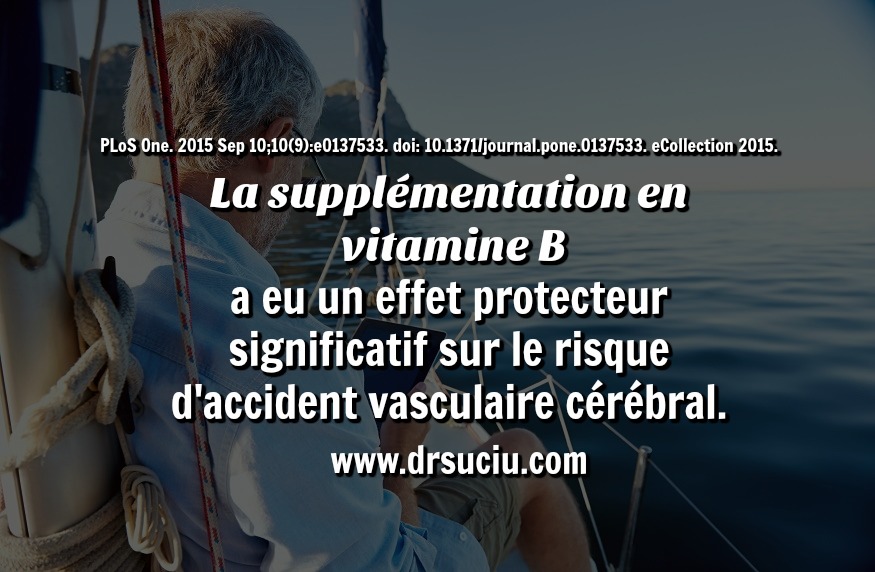


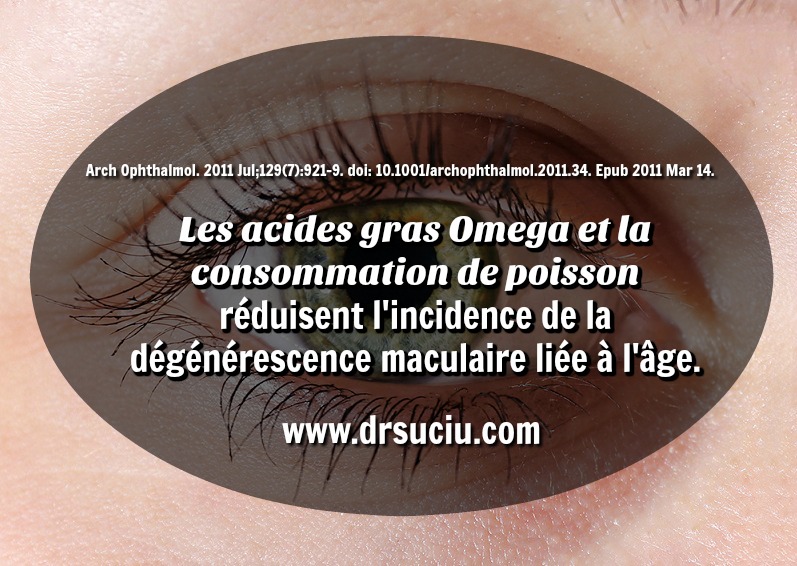



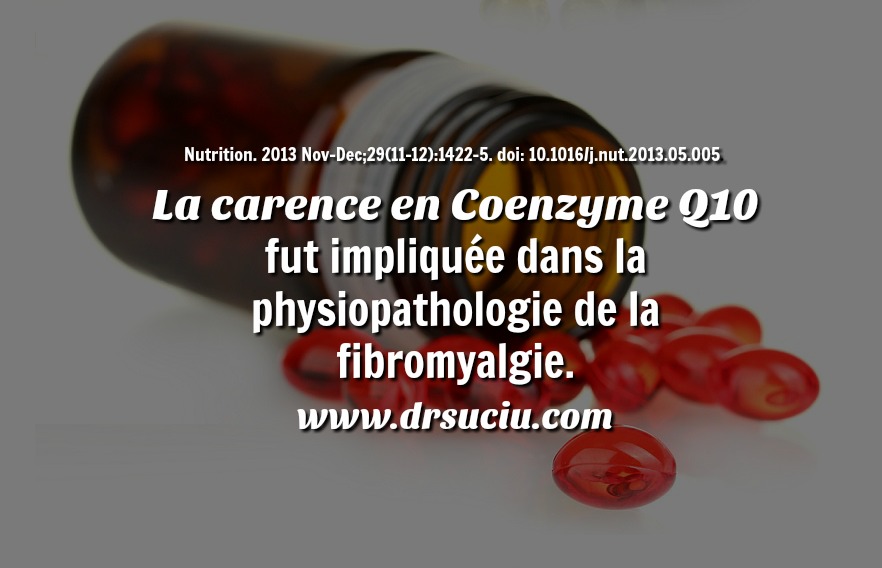

















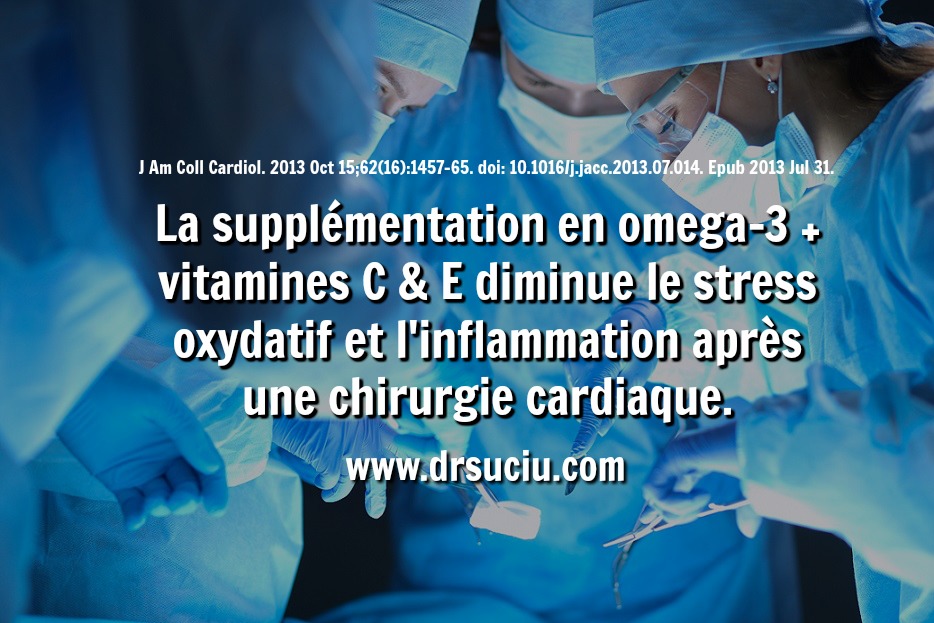



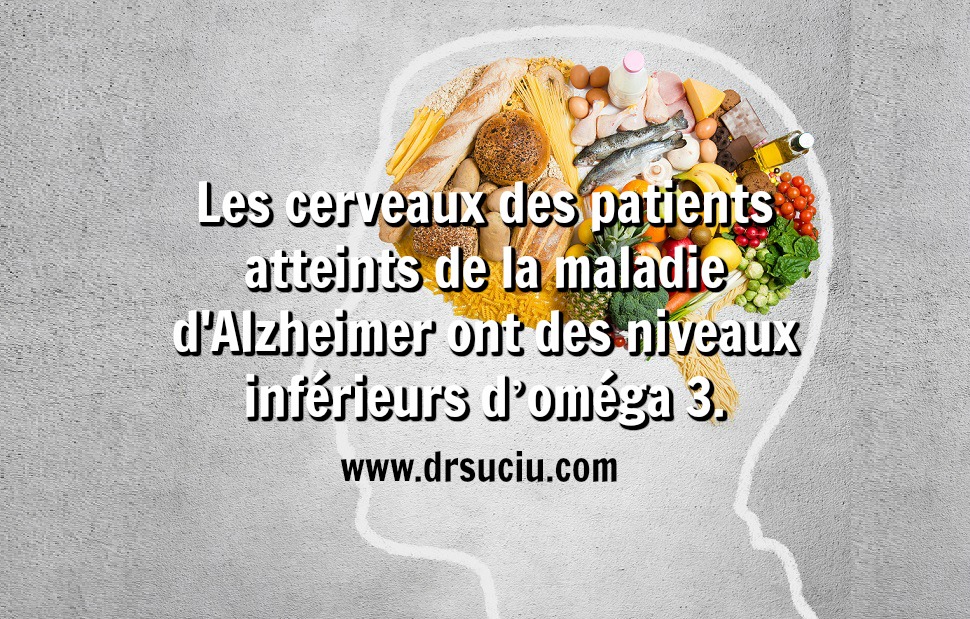







 Flux RSS
Flux RSS